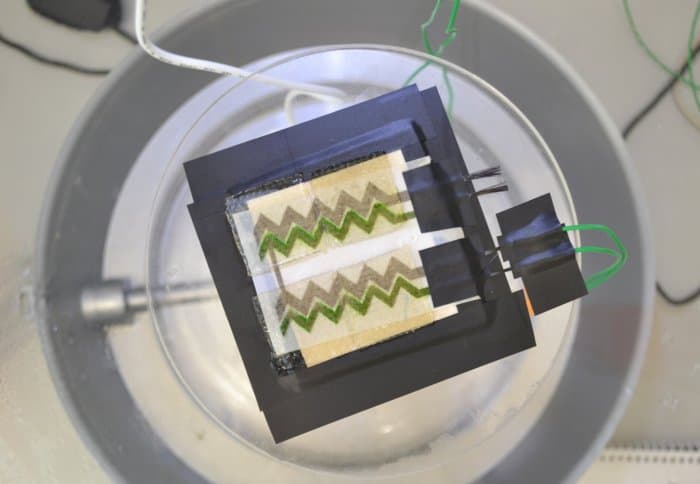Inkjet printed solar cells could become a reality after researchers at Imperial College London, the University of Cambridge and Central Saint Martins used an inkjet printer to create tiny bio solar panels using cyanobacteria.
Inkjet Printed Solar Cells
As solar panel technology gets better and better, scientists have figured out a way to create a living ink which they then print on paper and use as bio-solar panels. Cyanobacteria, tiny creatures which use photosynthesis to turn solar light into energy (nature’s solar panels!) managed to survive a process where they’re printed onto electrically conductive carbon nanotubes, according to Futurism.com.

Dr Marin Sawa from the Department of Chemical Engineering at the Imperial College of London noted that although the inkjet printed solar cells may not be able to generate enough power to run an air conditioner, for example, there are myriad ways their low power production could improve quality of life:
“Imagine a paper-based, disposable environmental sensor disguised as wallpaper, which could monitor air quality in the home. When it has done its job it could be removed and left to biodegrade in the garden without any impact on the environment” Dr. Sawa told the Imperial College website.
This new type of renewable energy technology is called microbial biophotoltaics (BPV) and is being worked on by scientists across the globe.
Other things able to be powered by a panel approximately the size of an iPad could power a small LED light bulb or a digital clock. The low power output means they’re suitable for things that require small amounts of energy, such as biosensors or environmental sensors. Dr Andrea Fantuzzi noted that the BPV solution is very cost effective and could have some great implementations for healthcare:
“Paper-based BPVs integrated with printed electronics and biosensor technology could usher in an age of disposable paper-based sensors that monitor health indicators such as blood glucose levels in patients with diabetes. Once a measurement is taken, the device could be easily disposed of with low environmental impact”
One of the best things about this is that these panels are completely biodegradable – which solves a long running problem of what to do with solar panels / storage after they’re past their ‘use-by date’. Very exciting tech (similar in a way to smart solar windows research) to ring in the new year which we’ll be sure to follow closely!

